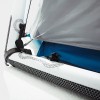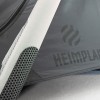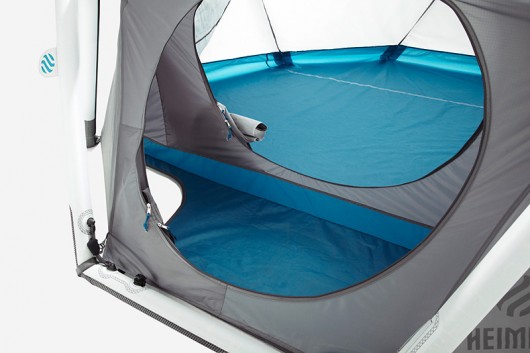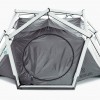The unique inflatable geodesic "Cave" tent provides stability and room to move
By Vincent Rice
17:44 December 6, 2011
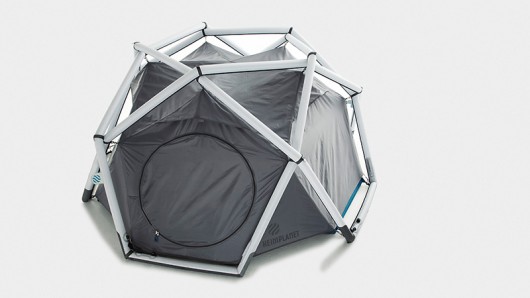
The inflatable geodesic 'Cave' tent from Heimplanet
Camping can be fun but to be honest, tents are a pain. The romance of carrying your accommodations with you and the excitement of arriving at a new destination can both be swiftly tempered by reality. Erecting your tent using bent aluminum poles, bits of string, damp plastic sheeting and too few pegs becomes old very quickly. Add in pitch darkness and/or rain and the temptation to head for the nearest dodgy hotel can become irresistible. It doesn't have to be that way. Eight years ago two Stefan's from Germany had an idea for a better tent - and now it's here. Time to erect - 1 minute.
In 2003, two surfer dudes from Hamburg, Stefan Clauss and Stefan Schulze Diekhoff, sat on a beach in Portugal and had a vision for a new type of tent. By 2008 that had got themselves in a position to start their company, Heimplanet, and properly develop their concept. Now, with a little help from a European development fund they are in production.
There are two central concepts to the design - the use of an inflatable skeleton rather than rigid poles, and the use of a geodesic shape for the structure - actually part of the shape of a carbon molecule in its diamond form. These two concepts compliment each other perfectly to produce a very stable form that can be raised in short order. Inflatable elements have been used before in tent construction but it's their combination with a geodesic arrangement that is unique (and patentable) and provides the stability. The support members are designed to be strong with a dual layer construction and, although inflation is one continuous operation, the inflated beams are valved into five separate sections so that the structure remains viable even with the failure of one or two sections.
Traditional tents are not very efficient shapes - the sloping sides remove a lot of potential airspace. The roughly circular 54 square foot (5 square meter) floor plan and near-perpendicular sides of the Cave tent make it much more expansive with sleeping space for three plus gear and 'pow-wow' seating capacity for six in a circle.
There are inner and outer tent surfaces with storage in between and an integral high strength fly sheet with five ventilation openings. The stability of the structure means that no pegs or guys are required to anchor the tent when some baggage has been stowed, though pegs are supplied for storm conditions. When deflated, the package measures 20" x 12" x 8" (50 x 30 x 20 cm) and weighs 11.5 pounds (5.2 kg) so it's just about luggable if your partner is carrying the rest of the provisions. The one slight fly in the ointment is the requirement for a large hand-pump - though more compact solutions are being investigated. More likely it's going to be a bike or car ride.
In the Northern Hemisphere it's not exactly tent-buying conditions at the moment and if the truth be told the two Stefans expected to be in production for the season just gone. However the delay allowed an extensive 16 week pan-European test of the prototypes and if you are planning a trip South of the equator, or just planning for next year, you can order a Cave tent now from the Heimplanet website for US$669 or €499 plus shipping.
Copyright © gizmag 2003 - 2011 To subscribe or visit go to: http://www.gizmag.com
